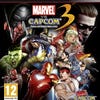MVC3: Netcode, balance and rejects
"In an ideal world a fighting game is in production forever."
With Marvel vs. Capcom 3 nearing its February launch, Eurogamer sat down with director and producer Ryota Niitsuma to get some last-minute details on one of 2011's most exciting fighting games. Read on for the latest on character balance, netcode and rejected superheroes, and discover how the game will pit rage quitters against each other.
The most difficult character to balance and tune was Arthur. Arthur's original appearance in Ghost n' Goblins had so many perks that made the game what it was. The way he jumps, the way he moves, those had to be retained. But in order to fit all of those elements into a fighting game that works with other characters, there was a lot of work involved.
In terms of regrets? There are no regrets at all. Everything I wanted to do has been realised in this game. The only thing I could wish for is more time. Games like this – it's applicable to all fighting games – the more time you spend on testing and balancing the better the game becomes. There's pretty much no end to it. In an ideal world a fighting game is in production forever because it needs to be tested forever.
But it has got to a very good point already and I'm all in all very happy with the product.
One difficult point with Arthur was although he has to be a character of Marvel vs. Capcom 3, we had to retain the original franchise, Ghosts n' Goblins. To bring the character and everything that makes that character what it is, we had to almost port the atmosphere from the original game into Marvel vs. Capcom 3.
We have managed to bring up and realise the character himself in the game, but it also helped us by bringing the background, the Ghosts n' Goblins stage. With all these little things going on in the background it makes it more valid for Arthur's existence in Marvel vs. Capcom 3. I hope we didn't just take a character out from a game and shove it in, but really brought and recreated a franchise in Marvel vs. Capcom 3.
On network mode, most of the time you'll be playing with people who you've never met. Although there are rules, spoken and unspoken, some will stick to rules and some people just do what they want. Although we don't want to penalise anyone, we felt it was important that people who are playing as expected are not disturbed by those who don't stick to the rules. We felt those people with similar tendencies should be put together so they understand what this rule of online network playing is about.
If you're going to misbehave then expect to be treated the same way. But there's obviously a way out. If you repent and increase your non-disconnection rate, you will be back to the normal pool. It's not a penalty, just a warning and a reminder not to misbehave.
In terms of the network code, our concept was about repeatability. People are going to play again and again and again. We had to make sure it's comfortable playing it. Because I'm not on the Super Street Fighter IV team I don't know exactly what their netcode is like. But I know we have a lot more information, or we have more data transfer due to more characters and more effects. And actual game flow is a lot faster than in Super Street Fighter IV.
But other than geographical lags, I don't see any problem in our current system. It's speed of light, and maybe a little bit of influence from infrastructure depending on where you are. So, if you're playing from Japan against someone in Sweden there will be some lag due to the distance. But it's all quite satisfactory.
In terms of online modes, we haven't actually announced all the modes yet. But, again, it's about repeatability. That's our motto this time. We have three characters to pick and then you have to pick three different assist modes. We gather people who play 400-500 matches a day don't want to do this 400-500 times a day. So we've implemented a type of profile. You create your own deck and then you pre-select your characters and pre-select your assists – alpha, beta and gamma – and you can just have that as a slot. So you can just pick your combination when you want.







